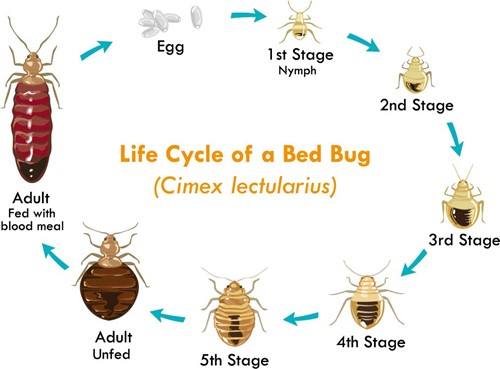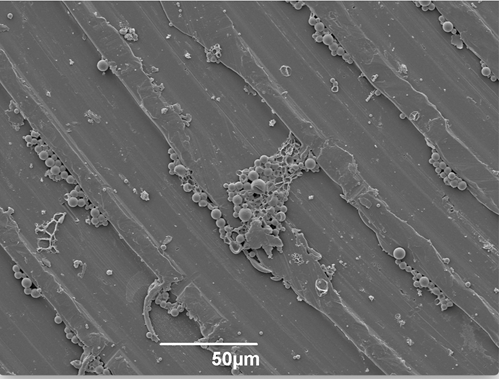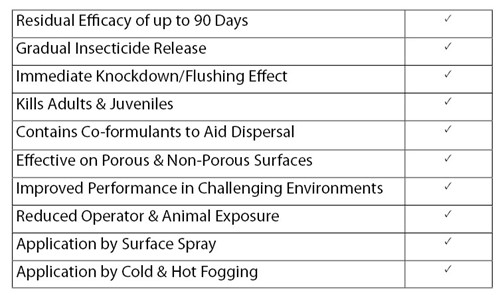Beating the bed bugs: How to banish them for good
30 March 2023
Bed bugs are a perennial pest problem and humans have been reluctantly co-habiting with the insects since biblical times.
According to the BPCA, bed bugs are the 6th most common reason for calling out a pest controller in the UK and the fourth most prevalent insect pest.
It’s their resilience that makes them such a tricky customer. If bed bugs are unable to find human blood to feed from, they can still survive for up to 12 months. Their lifecycle is essentially paused, but they won't automatically perish. Bed bugs’ lifecycle is typically between 5 weeks and 6 months. This means infestations can grow quickly, but complete eradication is difficult unless all stages from egg to adult are dealt with.
Bed bugs can enter people’s homes in a variety of ways including via suitcases after a work trip or holiday, through clothes, second hand furniture or by visitors coming to your home. In flats, hotels and student accommodation, the bugs can spread between residences and even infect an entire floor or building.
Just one female bug, brought into a home or hotel room can scale up to a full infestation. They lay between 200 and 500 eggs over a 2 month period and clusters of the eggs can attach themselves to items of furniture.
Bed bug control is an issue for a great many industry sectors including leisure, transport, social housing, social care and the education sector. It also affects private individuals. The bugs cause significant distress to residents if found within the home and a great deal of expense to those charged with their removal. For the hospitality industry it can cause a great deal of reputational damage. No one wants to stay in a hotel with a bed bug problem.
Lifecycle
To deal with bed bugs, consideration must be made for tackling multiple generations of the pest. Development stages span from the egg, through five nymphal stages before becoming a mature adult. The length of this cycle can vary greatly and failing to take care of the nymphs and eggs could mean a long-term, recurring issue.

Methods of control
For bed bugs, dealing with an infestation early and effectively, the first time round is crucial. A pest controller will be keen to avoid multiple call outs and so a combination of control methods may be used. If bed bugs are found, residual insecticides should be considered to provide longer term control and to stop population growth. A chosen insecticide must be able to remain on surfaces long enough to see off the nymphs and eggs as well as the matured insects.
Physical control methods can also be relied upon. By heating all areas of the room up to over 50°C the bug’s DNA starts to break down. This is a very effective method of bed bug control but attention needs to be paid to cool spots and to make sure all areas of the room reach the required temperature. Certain items will need to removed from the room such as plants and electronics.
Monitoring is also a crucial control method, with traps alerting people to the existence of bugs so early intervention can prevent a full scale outbreak.
Mostyn Duo CS: Cyphenothrin & Prallethrin
Mostyn Duo is a specialised, water-based insecticide formulated as a ZW combination. The ZW formulation consists of Cyphenothrin suspended in microcapsules of varying sizes (CS) and dispersed throughout the water phase. Prallethrin is evenly dispersed as fine globules in an emulsion-in-water (EW). This combination of formulation produces a dual effect; Prallethrin is available immediately upon application leading to a fast-acting response and the Cyphenothrin-containing capsules break down, leading to a slow release over time.
This new formulation offers quick and long lasting control and is effective against both adults and nymphs. Combining two formulation types, upon application of Mostyn Duo CS, Prallethrin will penetrate cracks and crevices which may act as harbourage areas, while the capsules containing Cyphenothrin will remain at surface level. Prallethrin is a Type-I pyrethroid and results in overstimulation of the pest's nervous system causing rapid movements. This overstimulation leads to ‘flushing’ of the pests from their harbourages. Cyphenothrin, on the other hand, is a Type-II pyrethroid, a more potent insecticide. The overstimulation caused by Prallethrin increases the amount of contact with Cyphenothrin-treated surfaces, leading to a higher kill rate.

Fig.1 It’s crucial that a lethal dose is applied for maximum short-term results and also to reduce the risk of resistance. This image shows how Mostyn Duo in microencapsulated form stays for a slow release. Image shown is at 50 µm – a human hair is typically 50-90 µm.
Longer Residual Efficiency
The microcapsules in Mostyn Duo vary in diameter and thickness meaning they break down over time, crucially at different rates, beginning with the thinnest ones rupturing upon application. This differing rate of breakdown produces a timed response and means that a consistent concentration of killing agent remains on surfaces for longer periods of time.
Another effect of the Cyphenothrin being held in capsules is that it is protected from the accumulation of dust, dirt and moisture which may otherwise prematurely degrade the insecticide. Similarly, the co-formulants incorporated in the capsule walls ensure minimal degradation from oxidation and UV light.

Fig 2. Upon application, Prallethrin will penetrate cracks and crevices which may act as harbourage areas, whilst the capsules containing Cyphenothrin will remain at surface level.
Key Features

The longevity and consistency of Mostyn Duo makes it an essential tool for winning the war against this tricky pest. Mostyn Duo is non staining and odourless.
Trial data
Thermal and ULV Fogging Application
The trial was conducted in a specialist laboratory. Batches of 25 adult bed bugs and 25 nymphs were used and each replicate, conducted in an experimental chamber, contained 100 adult bed bugs and 100 nymphs. Mostyn Duo was applied in two ways depending on the fogging method.
In the conditions of this trial, Mostyn Duo applied via hot or cold fogging, at a rate of 100ml per 500m³, provided complete efficacy as a curative treatment against common bed bugs (Cimex lectularius) sourced from laboratory-raised strains.
Direct application and no choice residual application via surface spray
Two complementary experiments were undertaken to determine the knockdown and residual efficacy of Mostyn Duo. Batches of 25 adult bed bugs and 25 nymphs were prepared. They were placed on a surface pre-treated with Mostyn Duo with various 'typical' porous and non-porous surfaces used. These included raw pine wood, bare concrete blocks, ceramic tiles, and steel.
The results revealed a complete efficacy as a curative treatment against common bed bugs sourced from laboratory strains.
Surface Spray trial under simulated field conditions
Laboratory studies were performed using a simulated infestation design to evaluate the efficacy and residual persistence of Mostyn Duo CS. The study was performed in five separate test chambers in conditions that emulated 'real life' scenarios using a test product (Mostyn Duo CS), a positive control (Permost CS, Permethrin 250g/l CS), and a negative control (water).
The recorded mortality rates of common bed bugs after exposure to rooms with surfaces treated with Mostyn Duo backs up the evidence from the previous laboratory studies. The design the researchers chose for the trial, which mimicked ‘real life’ environments, and accounted for variables which can degrade the insecticide, showed that the complete mortality observed offers greater proof of its efficacy than the same results observed in the laboratory trials.
Surface spray application under field conditions.
Trials of Mostyn Duo CS were conducted in apartments or hotel rooms using common bed bugs. The aim of the trials was to test the efficacy and the residual effectiveness up to 12 weeks.
Ten traps were placed overnight in the rooms and collected the next morning and returned to the laboratory for processing. Mostyn Duo CS was applied in the insects’ preferred locations on the bed base, under the bed, under the night tables and on all cracks and crevices that can be a harbourage for bed bugs around the bed.
The results showed a complete elimination of the bed bugs in all sites and a residual efficacy against bed bugs lasting until 12 weeks after treatment.
There are full details of the trials and conditions in the expanded report here.
If you'd like more information about the product, you can view the product page here or contact our team who will be happy to answer questions and provide more info.
